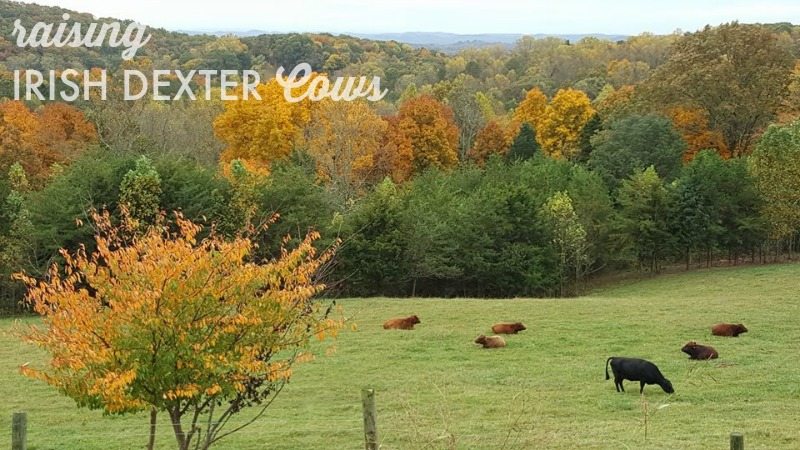

We recently added Cleo and Rosalind to our family. These two girls are registered Irish Dexter cows, an endangered heritage breed that gives great milk and tasty meat. We are so excited to finally have cows in our barnyard heritage menagerie!
In this blog post I want to introduce you to this wonderful breed of cattle, and to share some of the pros and cons for raising Dexters. Cleo and Rosalind have already endeared themselves with each of our family members, and I know you would have the same pleasant experience if you were able to bring some Dexters into your family.
We will take a look at:
- The heritage breed of Irish Dexter Cows
- Why would I choose to raise Dexters?
- What specific benefits will my Dexters provide?
- The Buyers’ check list when purchasing Dexter cattle.
1. The heritage breed of Dexter Cattle
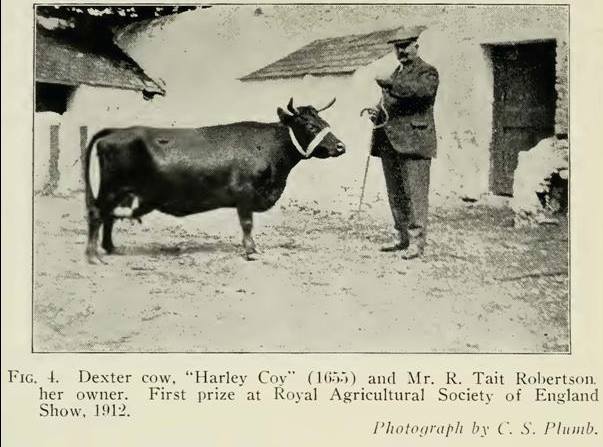
Today’s Dexter cattle descend from a herd of hardy Irish mountain cattle assembled by Mr. Dexter, agent to Lord Hawarden, around 1750. Dexter roots trace to the tiny Celtic cattle of ancient Eire. Irish fanciers established a Dexter registry in 1887 and an American version followed in 1911. Yet North American Dexters were ever scarce; today they’re included on the American Livestock Breed Conservancy’s Conservation Priority List, classified as rare. (If you’d like to help preserve an endangered heritage livestock breed, consider raising Dexters. They need your helping hand.)
Dexters are strikingly small cattle. Most Dexters are colored in shades of deepest ebony to sun-tinged, reddish-black. Reds and duns are far less common and grade from palest red to darkest mahogany; reds have black and pink noses, while duns have brown noses. Black-tipped white horns usually accent their small, neat heads, although a line of polled (hornless) Dexters now exists. There are two types: a longer-legged version (Kerry type) and a Dexter with shorter legs.
Dexters are dual-purpose cattle. Thanks to the breed’s foraging ability, and its high feed conversion and meat-to-bone ratios, a grass-fed Dexter steer will finish in 18 to 24 months, dressing out at 50 to 60 percent live weight. Dexter beef is fine-textured, tender and delicious. And Dexter cows give 1.5 to 3 gallons of roughly 4 percent butterfat milk daily, at a rate of up to one quart of cream per gallon.
Dexters are famous for their strong maternal instinct, easy calving, sweet dispositions and longevity. They do, however, occasionally throw dwarf “bulldog” calves.
2. Why would I choose to raise Dexters?
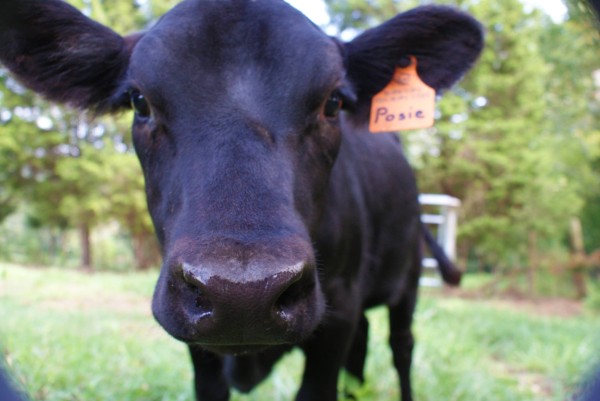
There are some very practical reasons to choose to raise Dexter cattle. Raising a Dexter cow has been compared to eating one potato chip—it’s almost impossible to settle for just one! Here are some of the benefits you will find:
- If you want to have a cow, you’ll need less pasture and far less space to house a mini version like a Dexter.
- If you must pen her and feed cut-and-carry forage, it’s doable.
- Her wee hooves and bantam weight equate with far less pasture damage, and she’s designed to eat grass, not concentrates.
- She’ll neatly thrive on one half the feed of her full-size kin and use it to produce much less waste for you to cart away.
- Come autumn, you’ll haul less hay. And you’ll tote fewer buckets of water to quench her thirst during the deep, hard winter freeze.
- If you are a small-scale farmer hoping to qualify land for ag-tax breaks or to turn a profit, this is a very good thing indeed.
3. What kind of care do I need to give my Dexters?
The care of your Dexter cows will not put a huge strain on your homestead budget. Your barn facility and pasture area will not need to be as strong and large as what you would need for larger breeds.
Dexter cattle are not as susceptible to cattle diseases as other breeds. They will rarely need to be attended to by a veterinarian. Dexters are also highly intelligent and have a steady temperament, which means they are not hard to handle. Some additional specifics related to their care includes:
- While they so not need as much housing as other breeds, they will need a place to get out of the wind and snow if you live in a cold winter climate.
- You will need to be certain you have secure fencing.
- You can get by on 2-3 acres for them, but your forage needs to be nutritious and in excellent shape.
- They may require additional hay, which you will need to have ready.
- Make sure you have a veterinarian to help you learn about cattle care and preventative medicine, and who will come to your property if needed.
4. What specific benefits will my Dexters provide?
Looking after a Dexter can be fun for children and can give them a sense of accomplishment. With proper attention and training, a Dexter can be easily handled by even the greenest homesteader. Dexters can be trained like oxen to plow or pull wagons, and their strength belies their size. At the same time, that size makes them less intimidating to children and adults.
They’re the perfect size for the family homestead. One Dexter cow will give about 1 to 2 gallons of milk a day, a much more manageable amount for a single family than the 8 to 10 gallons a typical Holstein yields.
If you raise a Dexter for beef, you’ll need room in the freezer for about 400 pounds of meat, rather than 600 to 800 pounds you’d get from a typical full-size steer. They are known as prolific milkers and produce a significantly higher milk yield than other breeds. Their milk is of very high quality and has high levels of protein and butterfat.
The meat from Dexter cattle has a pleasantly unique taste and texture that makes it suitable for boutique meat markets. Grain-fed Dexters will yield 250 pounds at 12 months, and 475 to 500 pounds at 24 months, dressing at about 60 percent of their live weight. These results can be obtained by supplemental feeding of only 5 to 7 pounds of grain per day for the last two to three months. Grass-fed animals yield about 55 percent of their live weight.
Dexters typically live long lives and can be bred until the ages of 14 or 15. Considering that a Dexter can be bred from as early as a year old and through harsh weather conditions, this trait is a clear advantage over other breeds.
Dexters are known as “easy calving cattle.” This means that they can successfully give birth without assistance and that they rarely experience any birthing difficulties. Also, the rate of live births of this type of cattle is relatively high. Because of these characteristics, Dexter bulls are often used instead of valuable heifers of larger cattle for breeding. This almost always results in larger numbers of safe, unassisted births.
1. The Buyers’ check list when purchasing Dexter cattle.
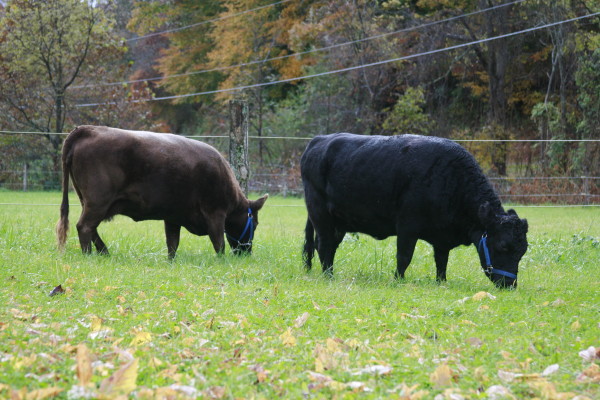
The American Dexter Cattle Association (ADCA) has given some valuable information in its Buyers’ check list (Here) that the wise homesteader will review before purchasing any Dexter cattle.
Buyers’ Check List
- Never buy an animal sight unseen.
- Be sure the animal is registered (registration certificate in Dexter Owner’s Handbook).
- If the animal is not registered, ask for it to be registered BEFORE you purchase it, at the very least make sure it can be. Animals without registration papers may not be able to be registered. If there is any question about the registration paper of the animal to be purchased, its sire or dam, the buyer may be buying a grade animal. (Avoid disappointment later.) If there is a question about registration, contact the Registrar. Remember, there are animals that cannot be registered.
- Heifers and cows over one year and bulls over two years may require Parentage Verification. (Avoid costly bills later or worse not being able to register them)
- Be sure the tattoo number on the paper matches the number in the animal’s ear.
- Make sure the animal can meet your state’s health requirements (for example blood testing for brucellosis, etc.)
- As a precaution, ask that the animal receive any necessary shots (such as for B.V.D.) prior to shipping.
- If buying a bull, you may want to request semen testing.
- Be sure the price is right–shop around—call other breeders—don’t buy the first Dexter you see—go visit several herds if possible.
- Ask to see progeny or sire and dam, of the animal you are buying. Anything you can see will be helpful to you in making your decision. Hint check the online pedigree pages, there may be pictures posted.
- Be sure if you purchase a bred cow that you get the proper signatures on the white application for registry so you can get your calf registered.
- Make sure the animal fits your needs (if you want to milk the animal make sure she has a good sound udder).
- Make sure to see copies of any genetic testing that you deem important such as Chondrodysplasia, PHA, Color, A2 Beta-Casein, or Genotyping. Make sure they are on file with the ADCA and will be printed on your registration certificate.
Remember these valuable buyer-beware points. Look at the herds of several breeders before making your decision to buy. You will see the differences in management as well as differences in the animals themselves. Beware buying animals at the sale barn as you are buying someone else’s problems or culls—those animals are there for a reason.
The more you know the better decisions you will make, and identifying breeders who are willing to provide advice and service after the sale will make your transition much smoother, helping you on the learning curve that always comes with a new adventure.
But once you have your Dexters, they will very quickly charm their way into the hearts of each family member. They will be much more than homestead cattle—they will become family pets!
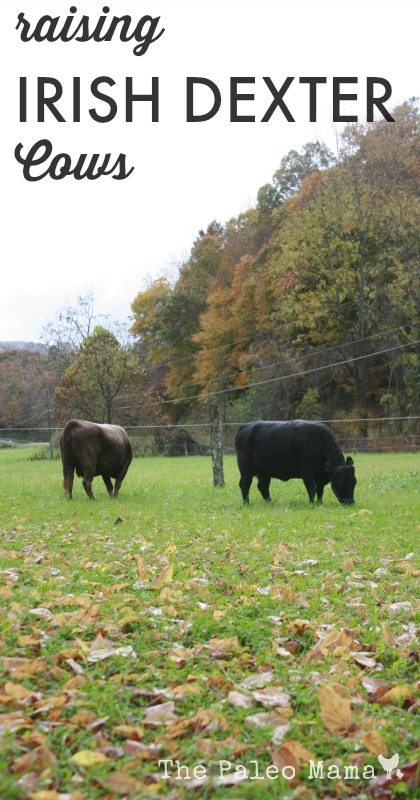
(PHOTO CREDIT: Image 1, 2, and 3 used with permission from Kirkhaven Farm)
Sources
- https://www.livingthecountrylife.com/animals/livestock/raising-dexter-cattle/
- https://www.hobbyfarms.com/livestock-and-pets/raising-small-cows-15001.aspx
- https://raisingbeefcattle.wordpress.com/raising-dexter-cattle-for-beginners/
- https://www.motherearthnews.com/homesteading-and-livestock/all-about-irish-dexter-cattle-zbcz1312.aspx
- https://www.dextercattle.org/PDF%20files/ADCA%20membership%20book.pdf
LOVE THIS! We have a Dexter family milk cow that joined us this Fall. We LOVE her and I love the smaller size. I can’t wait to read more about yours!
I’m so glad I’m on your newsletter list. The nature diary notes were so beautiful.
Thank you so much!
Love it! As Irish Dexter breeders, I commend you on putting together a concise accounting of our wonderful little cows. Y’all are going to have so much fun with Cleo & Rosalind!
So, did you have yours checked (or were they) fDNA milk quality? Just curious … we see more and more people buying for milk and more are requesting the A2/A2 milk gene.
Congrats!!
Corinne
Willows Edge Farm
We have a herd of 21 Irish Dexters. being raised on a Demeter Certified Biodynamic Ranch. The herd us not registered but come from registered stock. The gentleman we acquired our start from is quite elderly and did not keep up with the registerations. Have anyone of you experienced anything like this?